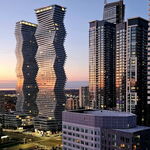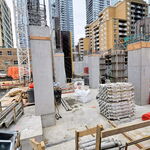Streety McCarface
Senior Member
Concord Park Place was planned back in 2005-2006, it only started getting built in like 2014. Of course Bessarion and Leslie's ridership levels are bad, their planned developments haven't matured.Is it?
Toronto has basically been booming for decades.
You'd have to multiply the amount of activity on that corridor currently by many times (including commercial development) to justify a subway along that route.
In any case, it doesn't really matter. The subway is already there and Sheppard is relatively close to STC - that's what would make it the most sensible line to extend into Scarborough.
Admittedly, housing wasn't as hurt in Toronto during those times, but they were still noticeable, with most new development still being focussed on areas being redeveloped at the time (downtown and North York Centre). Gas prices may have played a role as well, but there certainly weren't the number of developments under construction anywhere in the city that are now. Now, we are seeing a significant portion of that development shift to the Sheppard Corridor (West and East of Bayview), VMC, Science Centre, and Midtown.
Once ridership of the line gets to about 70K PPD, I'd argue the line, as is, is justified in being a subway. I don't even think that'll take more than 10 years to complete. This is the addition of 10K users to the line, meaning peak usage would increase by 5K PPHPD, bringing peak usage into the double digits — The grey area between Light Rail and subway.




